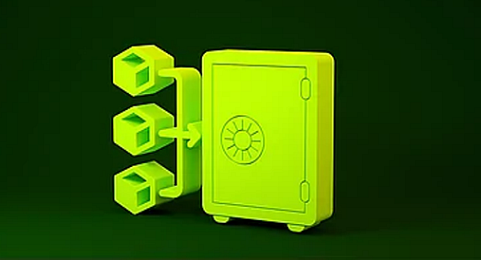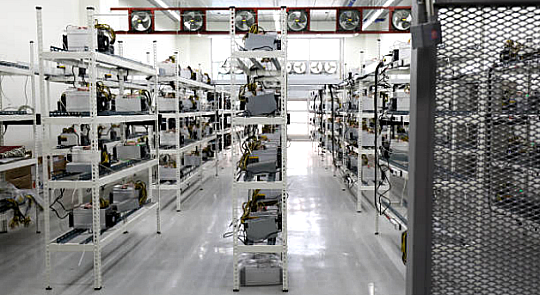Accredited InvestorsAltcoinAnatoli UnitskyAnti-Money Laundering (AML) In CryptoAPIArbitrageArtCoin TokenArticle DirectoryASICAuction Terminology GlossaryBasics of Stock Market InvestingBear MarketBest Crypto Payment Provider In the WorldBitcoinBlockchainBlockchain ConfirmationBlockchain Consensus MechanismBlockchain ForkBlockchain GlossaryBored Ape Yacht ClubBuild a Business That OutperformsBull MarketBuying SkyWay SharesByzantine Fault Tolerance (BFT) ExplainedCasascius CoinCentral Bank Digital Currency (CBDC)Centralized Crypto ExchangeCoinCoinsetCold WalletCollateralCommodity Futures Trading Commission (CFTC)Cross-Chain TechnologyCRUCrypto ExchangeCrypto GlossaryCrypto JokesCrypto Terms to KnowCrypto TickerCryptocurrencyCryptographyCryptojackingCryptounit BlockchainCryptounit GlossaryCryptounit ProgramdApp (Decentralized Application)Dead CoinDecentralized Exchange (DEX)Decentralized Finance (DeFi)Difference Between Bitcoin and EthereumDifferent Ways of Investing MoneyDigital CurrencyDistributed LedgerDo Your Own Research (DYOR)Dollar Cost Averaging (DCA)Dow Jones Industrial Average (DJIA)EncryptionERC-20ERC-721EthereumEvoScentFear Of Missing Out (FOMO)Fear, Uncertainty and Doubt (FUD)Fiat MoneyFNT Fintech CompanyGenesis BlockGlobal Unit PayGlossary of Banking TermsGlossary of Business TermsGlossary of Financial TermsHalvingHODLHot WalletHow Do I Start InvestingHow Rich is Satoshi Nakamoto?How to Create a BlockchainHow to Find Private InvestorsHow to Get Into FintechHow to Program Smart ContractsI Am Thrilled to Be a Part of This Global ProjectInitial Coin Offering (ICO)Initial Public Offering (IPO)Initial Token Offering (ITO)Innovation Basalt TechnologyInnovative Transportation TechnologiesInternational Bank Account Number (IBAN)Investing in Gold Mining StocksInvesting in Gold MiningJagerJoy of Missing Out (JOMO)Know Your Customer (KYC)LedgerLiquidity in CryptocurrencyMaker and Taker Fees in Crypto TradingMarket Capitalization (Market Cap)Meme CoinMetal Credit CardMetaMaskMillenials Now Have Access to Generational WealthMy Best Investment EverNew Digital EvolutionNFT GlossaryOff-Chain TransactionsOn-Chain TransactionsOpen Edition NFTPeer-to-Peer (P2P)Personal Loan GlossaryProbably the Best STO on the MarketProof of Stake (PoS)Real Estate Glossary of TermsReal Estate Investing GlossaryRebase TokenSecurities and Exchange Commission (SEC)Security Token ExchangesSecurity Token Offering (STO)Soulbound Decentralized Identities for Security TokensSoulbound ID Launch by Stobox Proves a SuccessSoulbound TokensStoboxStock Market GlossaryTestimonialsTether Platform and Token (USDT)UnitEx ExchangeUnitsky String TechnologiesUNTBUSDUValidatorWe Started Investing When We Were 25What are Blue Chip NFT?What are Blue Chip Stocks?What are Crypto Assets?What are Crypto Smart Contracts?What are CryptoPunks NFT?What are Digital Assets?What are Digital Collectibles?What are Gas Fees?What are Gas Wars?What are Hashmasks?What are Non Fungible Tokens?What are Non-Sufficient Funds (NSF)?What are Soulbound Tokens (SBT)?What are Stablecoins in Crypto?What are Transactions Per Second (TPS)?What are Utility NFTs?What are Utility Tokens?What Does Burning Crypto Mean?What Does Diamond Hands Mean?What Does Paper Hands Mean?What Does To The Moon Mean?What Does WAGMI Mean?What Happened to Satoshi Nakamoto?What is a 51% Attack?What is a Baby Boomer?What is a Backlink?What is a Banner?What is a Barcode?What is a Bid-Ask Spread in Crypto?What is a Block in Blockchain?What is a Block Reward?What is a Blockchain Address?What is a Blockchain Node?What is a Blockchain Oracle?What is a Blog?What is a Bond?What is a Bot?What is a Broker?What is a Business Accelerator?What is a Cash Cow?What is a Commercial Bank?What is a Commodity?What is a Con?What is a Credit?What is a Credit Limit?What is a Credit Rating?What is a Crypto Airdrop?What is a Crypto Bridge?What is a Crypto Scam?What is a Crypto Token?What is a Crypto Wallet?What is a Crypto Whale?What is a Crypto Winter?What is a Cryptocurrency Public Ledger?What is a Cryptocurrency Roadmap?What is a DAO?What is a Dark Pool?What is a Day Trader?What is a Dead Cat Bounce?What is a Default?What is a Derivative?What is a Digital Credit Card?What is a Fiscal Quarter?What is a Fungible Token?What is a Governance Token?What is a Grace Period?What is a Hard Fork?What is a Hot Wallet?What is a Hybrid Blockchain?What is a Hybrid PoW/PoS?What is a Joint Account?What is a Market Cap?What is a Merkle Tree in Blockchain?What is a Mining Farm?What is a Nonce? What is a PFP NFT?What is a POS System?What is a Prepaid Card?What is a Private Blockchain?What is a Private Key?What is a Public Blockchain?What is a Public Key?What is a Reserve Currency?What is a Ring Signature?What is a Routing Number?What is a Rug Pull in Crypto?What is a Safe Deposit Box?What is a Satoshi?What is a Security Token?What is a Seed Phrase?What is a Shitcoin?What is a Sidechain?What is a Soft Fork?What is a Spot Market?What is a State Bank?What is a SWIFT Code?What is a Tax Identification Number (TIN)?What is a Time Deposit?What is a Transaction Account?What is a Variable Interest Rate?What is a Virtual Assistant (VA)?What is a Virtual Card?What is a Virtual Currency?What is a Visa Card?What is a Whitelist in Crypto?What is a Whitepaper?What is Accounts Payable (AP)?What is AMA in Crypto?What is Amortization?What is an Accrual?What is an ACH Transfer?What is an Actuary?What is an Addendum?What is an Algorithm?What is an Angel Investor?What is an Annuity?What is an Asset?What is an ATM?What is an Atomic Swap?What is an Audit?What is an Avatar?What is an EIN?What is an Embargo?What is an Entrepreneur?What is an IDO (Initial Dex Offering)?What is an Interest Rate?What is an Internet cookie?What is an Investment Bank?What is an NFT Drop?What is an NFT Floor Price?What is an Ommer Block?What is an Orphan Block?What is an Outstanding Check?What is an Overdraft?What is Artificial Intelligence (AI)?What is B2B (Business-to-Business)?What is B2G (Business-to-Government)?What is Bartering?What is Bitcoin Dominance?What is Bitcoin Pizza Day?What is Blockchain Immutability?What is Blockchain Used For?What is BRICS?What is Business-to-Consumer (B2C)?What is C2C (Customer to Customer)?What is Capitalism?What is Catfishing?What is CFD Trading?What is Check Kiting?What is Cloud Mining?What is Communism?What is Content Marketing?What is Decentralization in Blockchain?What is DeFi in Crypto?What is Delisting?What is Depreciation?What is Digital Marketing?What is Diversification?What is Double Spending?What is Dumb Money?What is Dumping?What is Earnings Per Share (EPS)?What is Economics?What is Email Marketing?What is Equity?What is Etherscan?What is Fintech?What is Foreign currency?What is Forex?What is Fundamental Analysis (FA)?What is GameFi?What is Generative Art NFT?What is Gwei?What is Hard Currency?What is Hash Rate?What is Hashing in Blockchain?What is Inflation?What is Initial Game Offering (IGO)?What is Interest?What is Interest Income?What is Mainnet?What is Mastercard?What is Metaverse in Crypto?What is Mining in Cryptocurrency?What is Minting NFT?What is Mobile Banking?What is Money Laundering?What is NFT Alpha?What is NFT Metadata?What is NFT Rarity?What is NGMI Meaning?What is Nominal Interest Rate?What is Online Banking?What is Open-End Credit?What is OpenSea NFT Marketplace?What is Personal Identification Number (PIN)?What is Play-to-Earn?What is Polygon?What is Proof of Authority (PoA)?What is Proof of Work (PoW)?What is Public Key Cryptography?What is Pump and Dump?What is Quantum Computing?What is Refinancing?What is Retail Banking?What is Ripple?What is Sharding?What is Slippage in Crypto?What is Smart Money?What is Solvency?What is Soulbound ID?What is SSL?What is Staking in Cryptocurrency?What is Technical Analysis (TA)?What is Testnet?What is the Ask Price?What is the Better Business Bureau (BBB)?What is the Bid Price?What is the Dark Web?What is the InterPlanetary File System (IPFS)?What is the Gold Standard?What is the Lightning Network?What is the Prime Rate?What is the Sandbox?What is the Secondary Market?What is the World Bank?What is Tier 1 Capital?What is Tokenomics?What is TRC-20?What is Universal Banking?What is Unspent Transaction Output (UTXO)?What is Usury?What is Volatility in Crypto?What is Wash Trading?What is Web3?What is Whisper?What is XRP?What is Zero-Knowledge Proof (ZKP)?Who is Beeple?Who is Satoshi Nakamoto?Who is Vitalik Buterin?Why Tokenization is a Safe HavenWhy You Should Try Your Hand at Trading
What is Mining in Cryptocurrency?
- Home
- Cryptounit Glossary
- What is Mining in Cryptocurrency
Mining is the process through which cryptocurrency transactions are gathered, verified and recorded into a digital ledger known as blockchain. The work done by miners is essential for maintaining the integrity of the network and is also responsible for introducing new coins into the system.

Mining comprises massive, decentralized networks of computers all around the world verifying and securing blockchains. Computers on the network are rewarded with new coins in exchange for contributing processing power. It's a reciprocal process: miners keep the blockchain secure, the blockchain awards coins, and the coins provide a incentive for the miners to maintain the blockchain.
Fiat currency is printed and distributed by governmental authorities and financial organizations; but, for most cryptocurrencies, the issue of new coins is not in the hands of centralized institutions. Instead, new cryptocurrency units are created through the mining process, which adheres to a set of rules outlined by the underlying protocol. While the protocol specifies the fundamental principles, the consensus algorithms specify how these rules will be applied during the validation of transactions.
What is Mining in Cryptocurrency?
Mining is essential on Proof of Work (PoW) blockchains such as Bitcoin's. Newer blockchains typically employ Proof of Stake (PoS) and other consensus algorithms, and they do not require or permit mining.
Mining creates the chronological order of transactions on Proof of Work blockchains, which is critical in ensuring that preceding entries to the crypto "open ledger" cannot be modified. To be successfully confirmed and included, a transaction must be packaged in a block that follows tight encryption criteria. Those are verified and validated by network miners, with no intervention from government authorities.
Using Bitcoin as an example, the miners in the mining process are known as mining nodes, and they play an important role in the blockchain network's security. A miner's role is to collect unconfirmed transactions from the memory pool and organize them into a candidate block that they will attempt to validate.
Downsides of Mining
Mining risks are financial and regulatory in nature. Bitcoin mining, and mining in general, is a financial risk because one could invest thousands of dollars in mining equipment only to see no return on their investment. However, by joining mining pools, this danger can be reduced. If you are thinking of mining but reside in an area where it is illegal, you should think twice. Before investing in mining equipment, you should also examine your country's regulations and general sentiment toward crypto.
Another possible concern associated with the rise of Proof of Work systems mining is the increased energy consumption required by the computer systems running the mining algorithms. Though ASIC chip microprocessor efficiency has grown tremendously, network growth is surpassing technological advances. As a result, there are worries regarding the environmental impact and carbon footprint of Crypto mining.
In the early days of Bitcoin, anyone could easily start a mining application from their computer or laptop. However, as the network grew in size and more people became interested in mining, the mining algorithm became increasingly complicated to implement. This is because the Bitcoin code aims to find a new block every 10 minutes on average. With more miners participate, the odds of someone solving the proper hash quickly increases, and thus the difficulty of restoring the 10-minute target increases.
Because blockchain mining requires a lot of resources, it can impose a lot of strain on your GPU or other mining hardware. It is not uncommon for GPUs to blow up or mining rigs to catch fire. However, keeping your rigs operating at a reasonable speed and with enough power supplied, it is generally safe.
There are initiatives to alleviate this negative externality by pursuing cleaner and greener energy sources for mining operations, and utilizing carbon offset credits. Switching to less energy-intensive consensus mechanisms, such as proof-of-stake (PoS), which Ethereum has adopted, is another strategy. However, also PoS has a number of drawbacks and inefficiencies, such as the incentive of hoarding instead of using coins and the risk of consensus control centralization.
Conclusion
Curiosity and a strong drive to learn are simply required for aspiring cryptocurrency miners. As new technologies develop, the crypto mining space is continuously changing. Professional miners that obtain the highest payouts are continually researching and optimizing their mining tactics in order to increase their performance.
Climate change activists, knowing well what is mining in cryptocurrency, have become increasingly concerned as more and more fossil fuels are used to fuel the mining process.
Such concerns have prompted crypto communities like Ethereum to move away from PoW frameworks to more sustainable frameworks like proof-of-stake frameworks.
Related Articles

What is a Mining Farm?
A mining farm is a dedicated space for mining cryptocurrencies, ranging from a basement with multiple ASIC machines to a large warehouse with...

What is Proof of Work (PoW)?
The word "work" is crucial in proof of work. To prevent anyone from gaming the system, the method requires miners to compete with one another to be the first to...

Proof of Stake (PoS)
In contrast, blockchains that use the PoS concept reach consensus through a process that selects validators based on a number of...

ASIC
The term ASIC is commonly used in the cryptocurrency sector to refer to the specialized hardware produced and enhanced on a regular basis by...

Ledger
A ledger refers to transactions database. In cryptocurrencies, the ledger is the transaction history of a given cryptocurrency as stored on the blockchain.
- Home
- Cryptounit Glossary
- What is Mining in Cryptocurrency